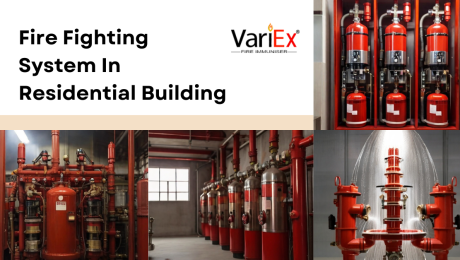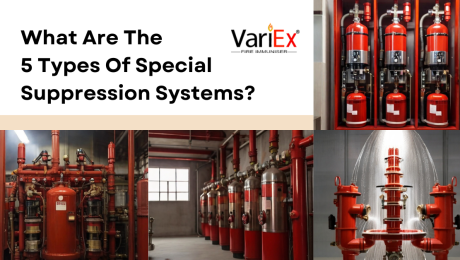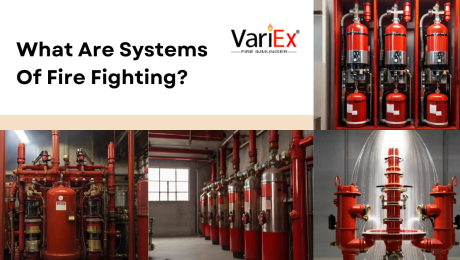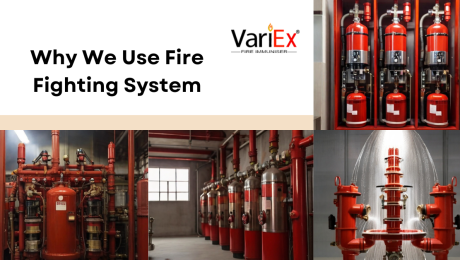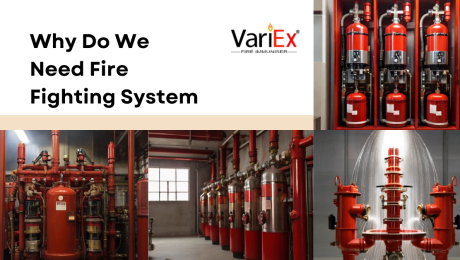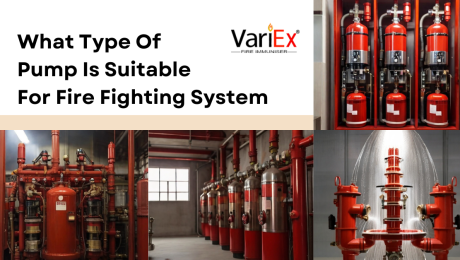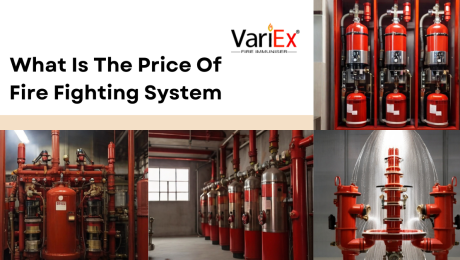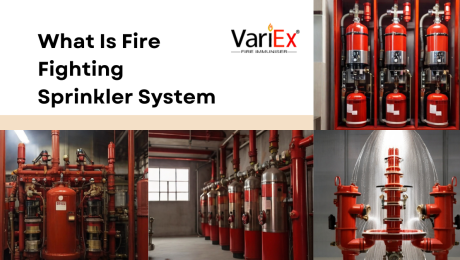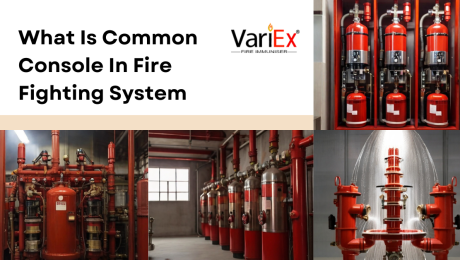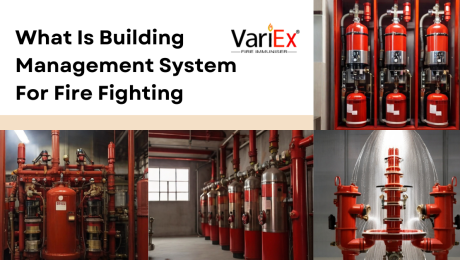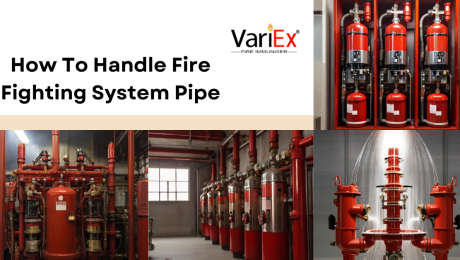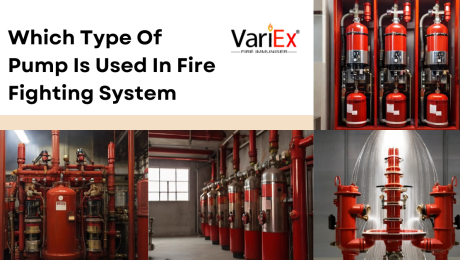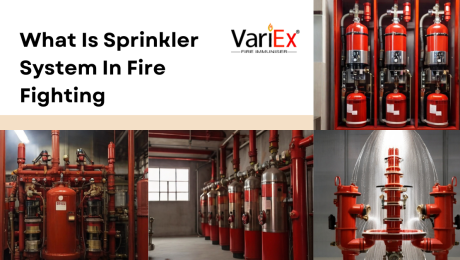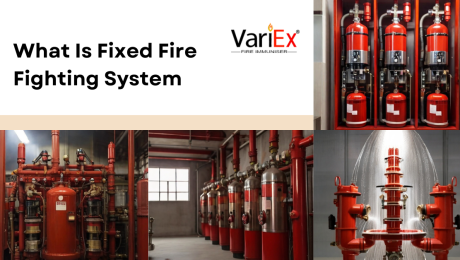Types Of Fire Suppression Systems
Monday, 19 February 2024 by Sonu Shree
- Published in Fire Fighting System
No Comments
Fire Fighting System In Residential Building
Monday, 12 February 2024 by Sonu Shree
A fire fighting system is an essential component in any residential building, aiming to ensure the safety and protection of its occupants. These systems are designed to detect and control fires in their early stages, preventing them from spreading and causing extensive damage. The two main components of a fire fighting system in a residential building are the fire alarm system and the sprinkler system. The fire alarm system consists of smoke detectors and fire alarms strategically placed throughout the building, promptly notifying occupants of the presence of fire. On the other hand, the sprinkler system activates when heat from a fire is detected, releasing water to extinguish the fire and control the spread of flames. With a reliable fire fighting system in place, residents can have peace of mind, knowing that their safety is prioritized in the event of a fire emergency.
- Published in Fire Fighting System
What Are The 5 Types Of Special Suppression Systems?
Monday, 12 February 2024 by Sonu Shree
There are five key types of special suppression systems that are commonly used in various industries and settings. The first type is the foam suppression system, which utilizes foam agents to suppress fires by smothering the flames and preventing oxygen from reaching them. The second type is the carbon dioxide suppression system, which works by displacing the oxygen in the air, effectively starving the fire. The third type is the clean agent suppression system, which uses special gases, such as halon or FM-200, to extinguish fires without leaving any residue behind. The fourth type is the water mist suppression system, which releases a fine mist of water droplets that cool down the fire and prevent it from spreading. Lastly, the dry chemical suppression system utilizes dry chemicals, like potassium bicarbonate or monoammonium phosphate, to interrupt the chemical reaction of the fire. Each of these suppression systems provides unique advantages and is designed to effectively combat different types of fires.
- Published in Fire Fighting System
What Are Systems Of Fire Fighting?
Monday, 12 February 2024 by Sonu Shree
Firefighting systems are crucial for ensuring the safety and protection of lives and properties from the devastating effects of fires. These systems are designed to detect, control, and extinguish fires effectively in various settings. The key components of a fire fighting system typically include fire alarm and detection systems, fire suppression systems, and fire hydrant systems. Fire alarm and detection systems utilize state-of-the-art technology to identify the presence of smoke, heat, or flames, promptly alerting occupants and initiating appropriate measures. Fire suppression systems employ different methods such as water-based sprinklers, foam systems, or gas systems to rapidly douse or smother the fire. Fire hydrant systems provide access to adequate water supply for firefighting operations. Overall, these systems work in tandem to swiftly respond to fires, minimizing their impact and ensuring safety in residential, commercial, and industrial settings.
- Published in Fire Fighting System
Why We Use Fire Fighting System
Monday, 12 February 2024 by Sonu Shree
A fire fighting system is an essential component in any building or facility to ensure the safety and protection of life and property. In the event of a fire, these systems are designed to detect, control, and extinguish the flames effectively and efficiently. The primary purpose of a fire fighting system is to contain the fire, minimize its spread, and provide people with a safe means of escape. A well-designed and properly maintained fire fighting system can significantly reduce the risk of fire-related injuries or fatalities. Additionally, these systems can also protect valuable assets and minimize financial losses that may arise from fire damage. By investing in a reliable fire fighting system, we can promote a secure and safe environment for all occupants and stakeholders.
- Published in Fire Fighting System
Why Do We Need Fire Fighting System
Monday, 12 February 2024 by Sonu Shree
Fire fighting systems are absolutely essential for the safety and protection of buildings, properties, and lives. The potential devastating consequences of unchecked fires make it imperative to have a reliable fire fighting system in place. These systems consist of various components, such as fire alarms, sprinkler systems, fire extinguishers, and fire hydrants, all working together to detect, control, and extinguish fires. By employing such systems, we can significantly reduce the risk of fires spreading rapidly and causing widespread damage. Additionally, fire fighting systems play a crucial role in providing early warning signs, enabling occupants to evacuate safely and giving first responders valuable time to arrive and tackle the fire effectively. The investment in a well-designed fire fighting system is vital, as it helps to minimize the loss of life, property, and assets, ensuring the overall safety and well-being of individuals and communities.
- Published in Fire Fighting System
What Type Of Pump Is Suitable For Fire Fighting System
Monday, 12 February 2024 by Sonu Shree
When it comes to selecting a pump for a fire fighting system, several factors should be considered to ensure effective and efficient performance. One type of pump that is widely considered suitable for this purpose is the diesel engine-driven centrifugal pump. These pumps are known for their reliability and ability to deliver high volumes of water at high pressures, which is crucial in tackling fire emergencies. The diesel engine ensures that the pump can operate independently of the main power supply, enabling it to be deployed in remote areas or during power outages. Additionally, centrifugal pumps are designed to handle a wide range of flow rates and pressures, making them versatile for various fire suppression applications. Their sturdy construction and ability to handle both clean and dirty water make them suitable for the harsh environments often encountered in fire fighting scenarios. Overall, a diesel engine-driven centrifugal pump is a dependable choice for any fire fighting system due to its robustness, versatility, and reliability in the face of emergencies.
- Published in Fire Fighting System
What Is The Price Of Fire Fighting System
Monday, 12 February 2024 by Sonu Shree
The price of a fire fighting system can vary depending on numerous factors. These include the size of the building or area that needs to be protected, the type and complexity of the system, as well as any additional features or requirements. Generally, the cost of a fire fighting system includes the equipment, such as fire alarms, extinguishers, sprinkler systems, and fire suppression agents. In addition, there are installation costs, which can involve the labor and materials required for the setup. It is important to note that maintenance and servicing costs should also be considered as an ongoing expense. To get an accurate price estimate, it is recommended to consult with fire protection experts who can assess the specific needs and provide a detailed quotation.
- Published in Fire Fighting System
What Is Fire Fighting Sprinkler System
Monday, 12 February 2024 by Sonu Shree
A fire fighting sprinkler system is a crucial component of any building’s fire safety strategy. This system consists of a network of pipes connected to sprinkler heads that are strategically placed throughout the building. In the event of a fire, the sprinkler heads are activated when the surrounding temperature reaches a certain threshold, causing them to release water. This immediate response helps to control and extinguish the fire, preventing it from spreading and causing further damage. Fire fighting sprinkler systems are designed to provide an early warning and contain the fire until the arrival of professional fire fighters. They are highly effective and have been proven to significantly reduce the risk of fire-related deaths and property loss. Regular maintenance and inspections are crucial to ensure that these systems are functioning optimally and ready for any emergency situation.
- Published in Fire Fighting System
What Is Common Console In Fire Fighting System
Monday, 12 February 2024 by Sonu Shree
A common console in a fire fighting system refers to a centralized control unit that integrates and manages various components of the fire protection system. It acts as a brain, allowing firefighters or designated personnel to effectively monitor and control the entire system from a single location. This console typically includes features such as alarm panels, control switches, and display screens to provide real-time information on fire detection, suppression, and evacuation processes. By consolidating these functions, the common console enables quick decision-making and coordinated response in emergency situations. It plays a crucial role in enhancing the overall efficiency and safety of a fire fighting system, ensuring that firefighting efforts are efficiently directed towards mitigating potential fire risks.
- Published in Fire Fighting System
What Is Building Management System For Fire Fighting
Monday, 12 February 2024 by Sonu Shree
A building management system (BMS) for fire fighting is an indispensable tool for ensuring the safety and security of buildings. It is a computer-based control system specifically designed to monitor, control, and optimize various fire safety and prevention measures within a building. BMS integrates various fire detection and suppression systems, such as smoke detectors, fire alarms, and sprinklers, allowing for their efficient operation and coordination. With the ability to remotely monitor and control these systems, BMS provides real-time information on fire incidents, enabling swift response and action. Additionally, it helps in maintaining proper maintenance schedules, allows for the testing and inspection of equipment, and generates detailed reports and logs for regulatory compliance purposes. Overall, a BMS for fire fighting enables effective management and mitigation of fire risks, safeguarding occupants and property.
- Published in Fire Fighting System
How To Handle Fire Fighting System Pipe
Monday, 12 February 2024 by Sonu Shree
When it comes to handling fire fighting system pipes, it is crucial to adhere to professional and informative guidelines to ensure the safety and effectiveness of the system. Firstly, one must ensure that the pipes are regularly inspected and maintained to prevent any potential leaks or damages. It is essential to familiarize oneself with the layout and functions of the pipes to effectively operate and control the flow of water or extinguishing agents during an emergency. In case of a fire, it is vital to quickly locate the main shut-off valve to promptly stop the water supply and control the situation. Regular training and drills should also be conducted to familiarize oneself with the operation of the fire fighting system pipes, ensuring a swift and coordinated response in case of emergencies. Maintaining a professional and informative tone in handling these pipes is of utmost importance to guarantee the safety of individuals and property.
- Published in Fire Fighting System
Which Type Of Pump Is Used In Fire Fighting System
Monday, 12 February 2024 by Sonu Shree
In fire fighting systems, the type of pump used plays a critical role in ensuring effective and efficient operation during emergencies. One commonly used pump in these systems is the centrifugal pump. Known for its ability to handle large volumes of water, this pump is designed to convert mechanical energy into kinetic energy, resulting in the rapid expulsion of water at high velocities. Another popular pump choice is the positive displacement pump. While it operates at lower flow rates compared to centrifugal pumps, it provides high pressure and is ideal for delivering water to extended distances or overcoming obstacles. Regardless of the type, these pumps are crucial in providing a reliable water supply to fire suppression systems, enabling firefighters to combat flames and save lives effectively.
- Published in Fire Fighting System
What Is Sprinkler System In Fire Fighting
Monday, 12 February 2024 by Sonu Shree
A sprinkler system in fire fighting is a critical component of a building’s fire protection system, designed to suppress and control fires until professional firefighters arrive on the scene. It is a network of pipes connected to a reliable water supply, usually a dedicated water tank or the municipal water system. The sprinkler system is equipped with sprinkler heads strategically placed throughout the building, which activate individually when heat triggers them. When a fire occurs, the heat from the flames rises and activates a sprinkler head, causing it to release water onto the affected area. The water flow creates a cooling effect, lowers the temperature, and suppresses the fire, providing valuable time for occupants to evacuate safely and prevent further damage to the property. Sprinkler systems are highly effective in fighting fires, as they can often extinguish a fire before it grows too large or becomes uncontrollable.
- Published in Fire Fighting System
What Is Fixed Fire Fighting System
Monday, 12 February 2024 by Sonu Shree
A fixed fire fighting system refers to a comprehensive fire suppression system installed in a building or an industrial facility. It is designed to automatically detect and extinguish fires in their early stages without human intervention. This system typically consists of a combination of sensors, detectors, valves, pipes, and nozzles strategically placed throughout the area to provide effective fire protection. Examples of fixed fire fighting systems include sprinkler systems, gas suppression systems, water mist systems, and foam systems. These systems are crucial in preventing the rapid spread of fire and minimizing damage to property, as well as ensuring the safety of occupants and employees. It is essential to regularly inspect, maintain, and test these systems to ensure their proper functioning when needed.
Can Expired Fire Extinguishers Be Recharged?fire alarmfire alarm systemFire Alarm System for homefire extinguisherFire ExtinguishersFire FightingFire fighting systemFire SafetyFire Safety at HomeFire Safety at hospitalFire Safety at Workplacefire safety awarenessfire safety awareness trainingfire safety brandfire safety equipmentFire suppressionFire Suppression in Buildingsfire suppression systemfixed fire fighting system



